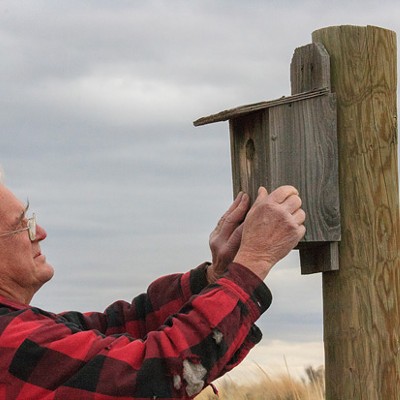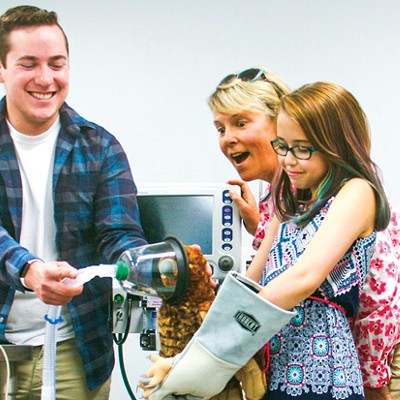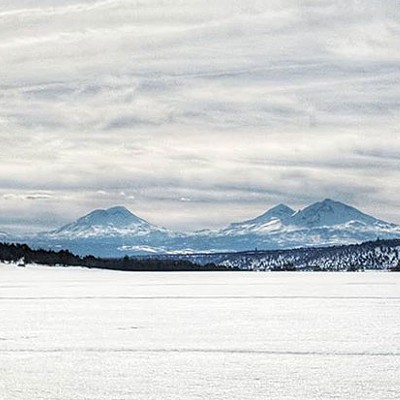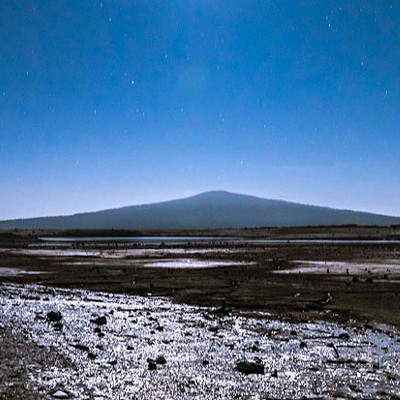A month ago, Turkey Vultures, AKA buzzards or TVs, began winging their way north from their long (and very wise) winter stay in the southern climes, like the Sacramento Valley.
If you want to shorten Turkey Vulture, (Cathartes aura), the official birding world acronym is, TUVU (not to be confused with TOFU, a paste that's made out some kind of beans that some people love to eat). Another popular acronym is TV (not to be confused with that wonderful box in our home that brings us OPB's Oregon Field Guide).
TUVUs, like many of the birds of Oregon (and homo sapiens known as Snow Birds) must obey the sun. The length of day, and the position of the sun in relation to the horizon are two components of daylight that trigger the ancient call that tells birds to get-the-kelly outta here, before they freeze their you-know-what off and they head for the Sacramento Valley, and the hot hills around Salton Sea. Then later on—as the earth tilts and the sun climbs higher—it tells them to come back north and make babies.
TVs have a wingspan of 63 to 72 inches; a body length from 24 to 32 inches, and tip the scales at around 4-1/2 pounds. The sexes are identical in plumage and coloration, but the female is slightly larger. While soaring, a TV holds its wings in a shallow V-shape and often tips from side to side to take advantage of lift, and a bunch of them is known as a "kettle."
In case you're wondering how long vultures live, one was known to reach the ripe old age of 40 in a zoo—but out in the wild, if they get to about 16 years, they're doing really well.
Oh, yes, the common name Turkey Vulture wasn't pinned on them, because they eat or sound like turkeys; its because of the "bald" head and dark plumage, similar to the so-called, wild turkey. Vulture, is from the Latin: vulturus, or "tearer." (If you've ever witnessed a vulture getting into a road-killed deer, or dead cow, you can appreciate the, "tearer" business.)
And speaking of road-kills; the Oregon Department of Transportation (ODOT) maintains several well-concealed, out-of-the-way and unnamed graveyards where they deposit road-killed creatures. These sites are well away from the highway and extremely important for scavengers to go about their grisly work of recycling dead animals.
Residents living close to—and traveling on—the Three Creeks Road in Sisters and near the Swede Ridge trailhead know that TVs are communal, and enjoy (require) the company of their kind. Every evening as the sun is going down, these best-of-all-soaring-birds come in to roost in the big cottonwoods along the road, and if you're one who enjoys birds as much as I do, this daily ritual is always a lot of fun to observe as individual tearers come in to roost, crashing into one another. By the time the sun is long gone, however, the constant juggling and shoving usually settles down, and if vultures had a syrinx (voice box), you could probably hear them snoring.
Hikers and bikers along Three Creeks Road in the morning may often see vultures standing on limbs in a spread-winged stance (known as the "holistic pose"). It serves multiple functions: drying the wings, warming the body, and baking off bacteria collected while poking around in the awful offal of a dead deer's rotting carcass.
The TVs' primary form of defense (and to get airborne from the surface in a hurry) is regurgitating semi-digested meat—the stuff they puke up would gag a maggot and deters most creatures from raiding its nest or violating its comfort zone. Be warned! The gagging goop will sting if you get it in your eyes, and your friends will never speak to you again if it gets into your hair.
Vultures forage by smell—a tool that is becoming more understood in the avian world. They often soar low to the ground in their tippy-tippy flight to pick up the scent of ethyl mercaptan gas produced by the beginnings of decay in dead animals.
In some places in the West, TVs are also of great worth to health departments. If a dead animal is infected with a transmissible disease (such as Rocky Mountain Tick Fever, anthrax, cholera, or other livestock disease), the viruses that cause those diseases are destroyed when they passes through the Turkey Vulture's digestive tract. (No wonder they have such "bad breath.")
A vulture's nest is located in a cave cliff, rock crevice or burrow, and sometimes inside a hollow tree. Roger Watkins, a student of my days with OMSI in the '60s, found a cave nest and reported that right next to the egg was a large pile of puked up awful offal, waiting to be fed to the nestlings as soon as it hatched. What a way to start life.
For years, I searched out nests and banded nestlings to gain more knowledge of their range, longevity and reason(s) for mortality. But when it was discovered the birds defecate and urinate down their legs to control body temperate, leg-banding was no longer allowed, and patagial wing markers are now used. WATCH FOR THEM!
Turkey Vultures receive special legal protections under the Migratory Bird Treaty Act of 1918, and Oregon state wildlife law. In the U.S., it is illegal to, "take, kill, or possess Turkey Vultures," and violation of the law is punishable by a fine of up to $15,000 and imprisonment of up to six months.


























